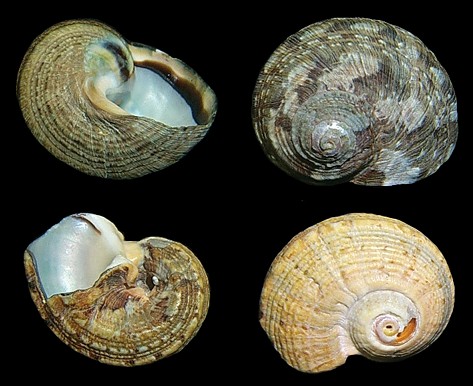| Turbo sarmaticus Linnaeus, 1758 |
| (Left-handed Specimen* On The Bottom) |
|
|
| * Unlike the other left-handed shells in this topical collection, this specimen gives indications of (1) severe deformity and (2) a different shell topology. Note the anomalous presence of an umbilicus in the left-handed specimen (SW). Furthermore the sculpture of the "ventral" surface in this image is similar to that of the dorsal surface of the normal shell (NE), and vice-versa. Note the widely-spaced, variable but generally more coarse spiral cords on the NE and SW shells and the more closely-placed, regular, and finer sculpture of the NW and SE specimens. The callus around the aperture of the left-handed shell (SW) is greater on the apical aspect, whereas the typical shell (SE) shell has this callus expanded in the abapical (away from the spire) direction. Instead of being a mirror image of a normal shell, this left-handed specimen is more plausibly viewed as having grown "upside-down." This pattern of shell-coiling has been termed "heterostrophic pseudosinistral." Among Recent adult benthic marine mollusks this condition appears to be strictly abnormal and even rarer than abnormal true sinistrality. On the other hand, this growth pattern is the norm for members of the genus Lanistes Montfort, 1810 (Prosobranchia: Ampulariidae), which nowadays prosper in the fresh waters of Africa - and have for the past 50,000,000 years or so. |
